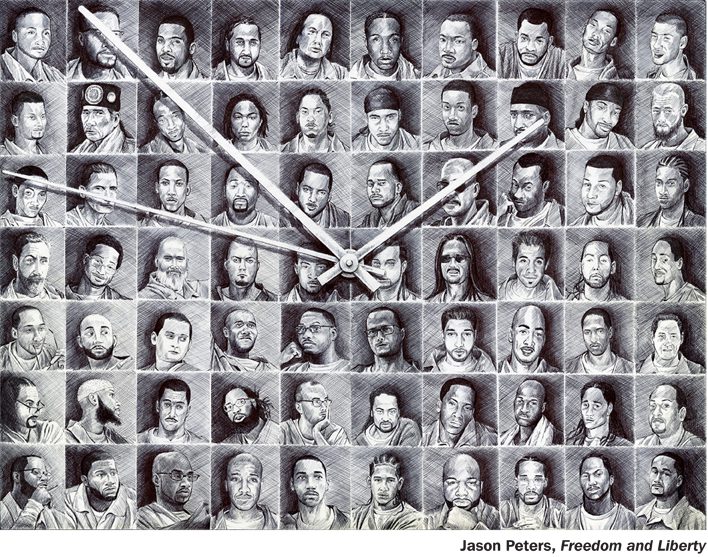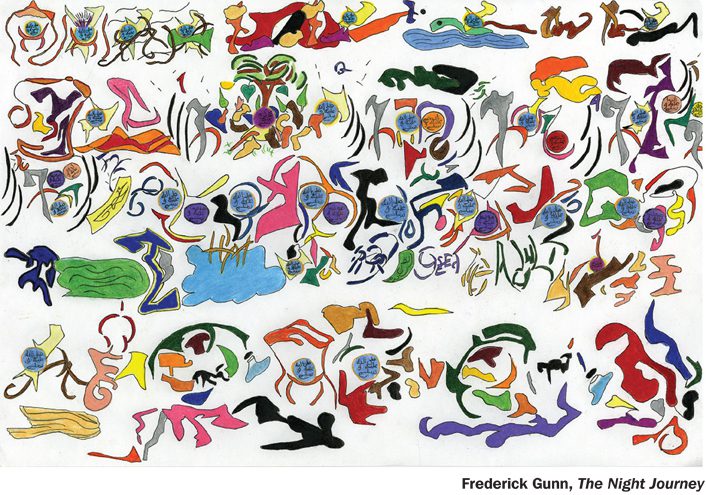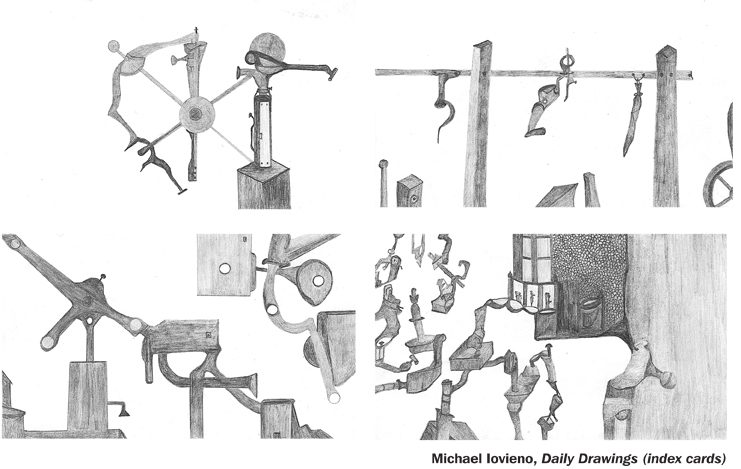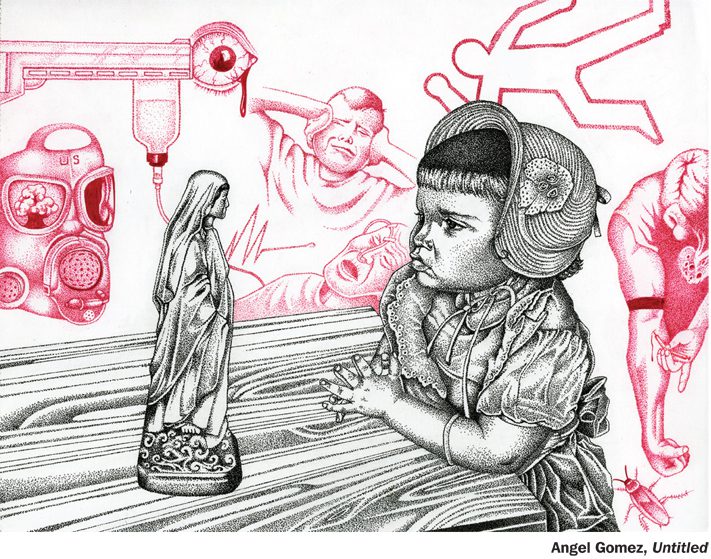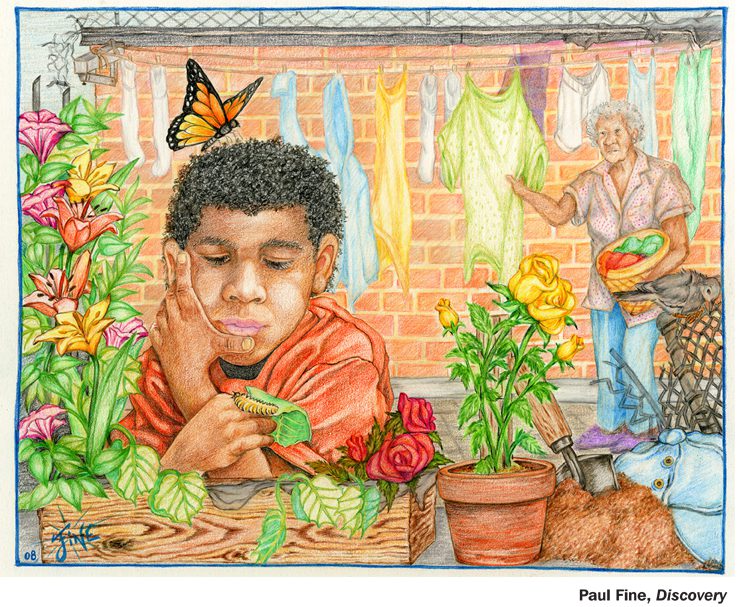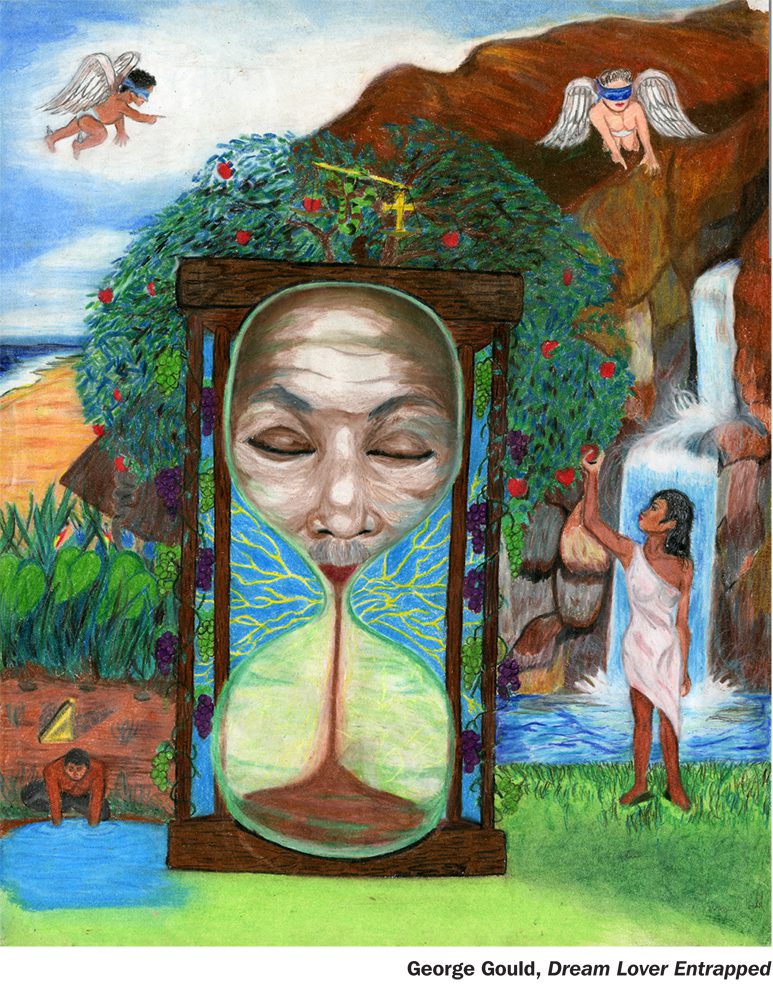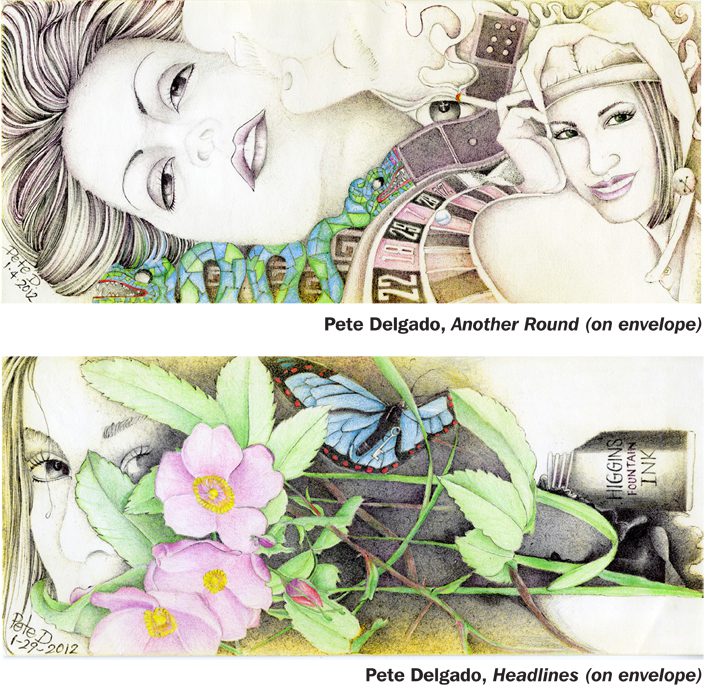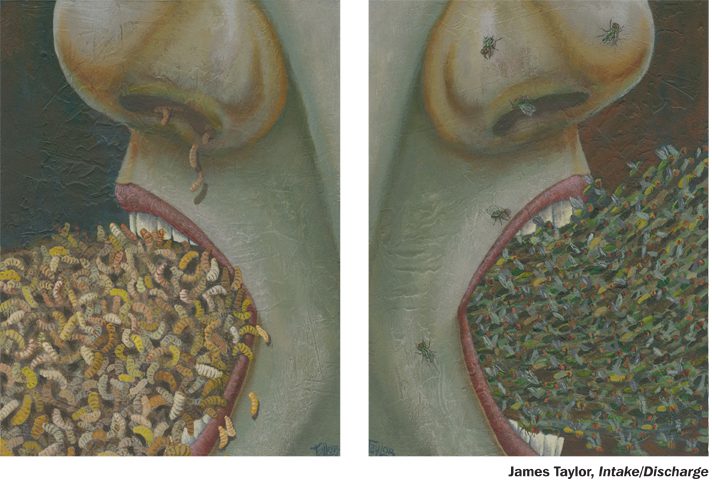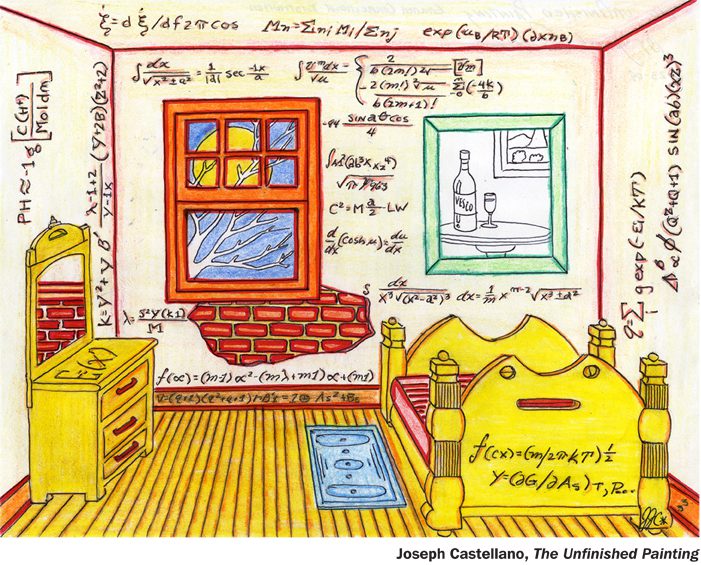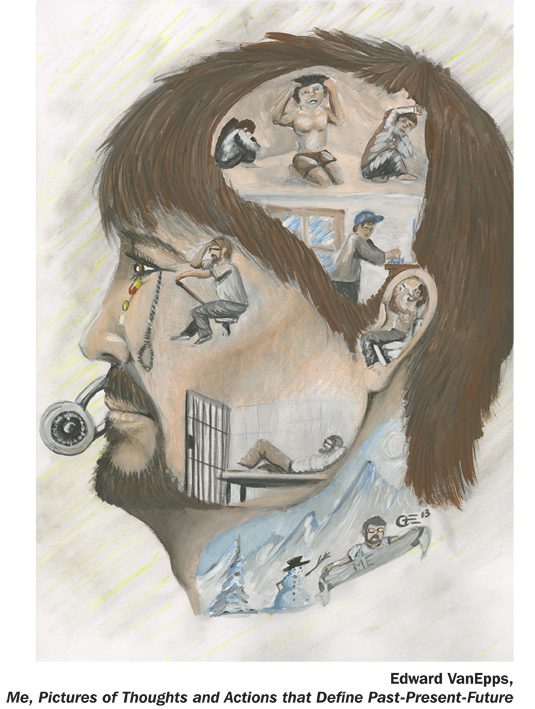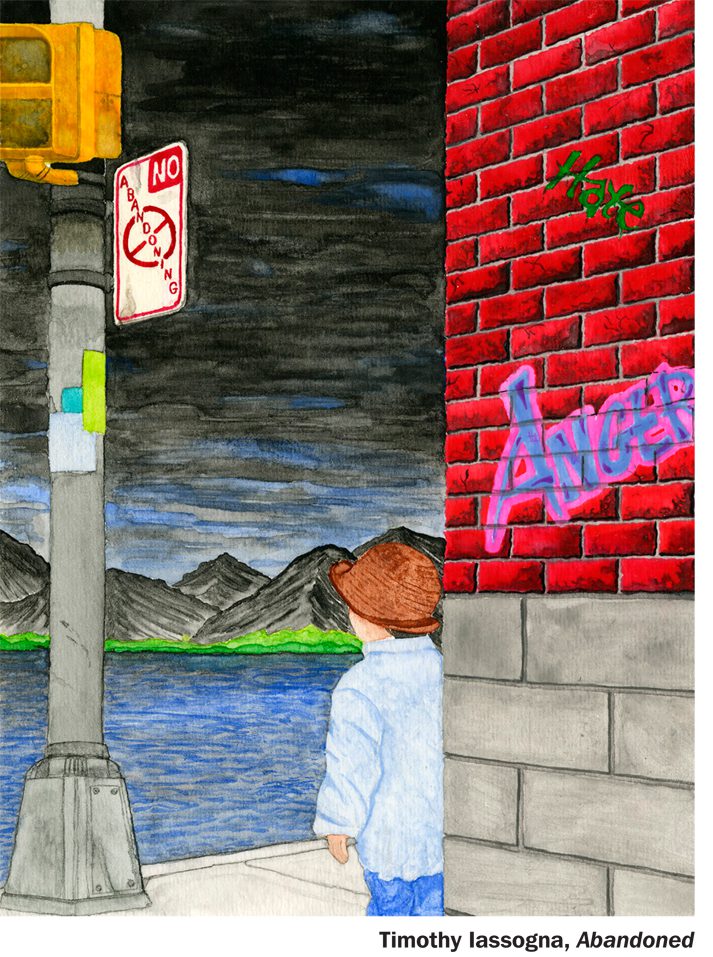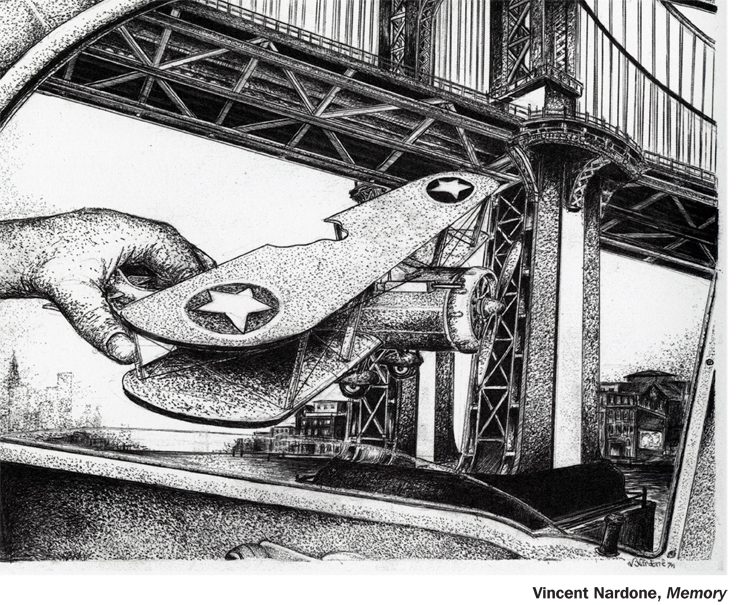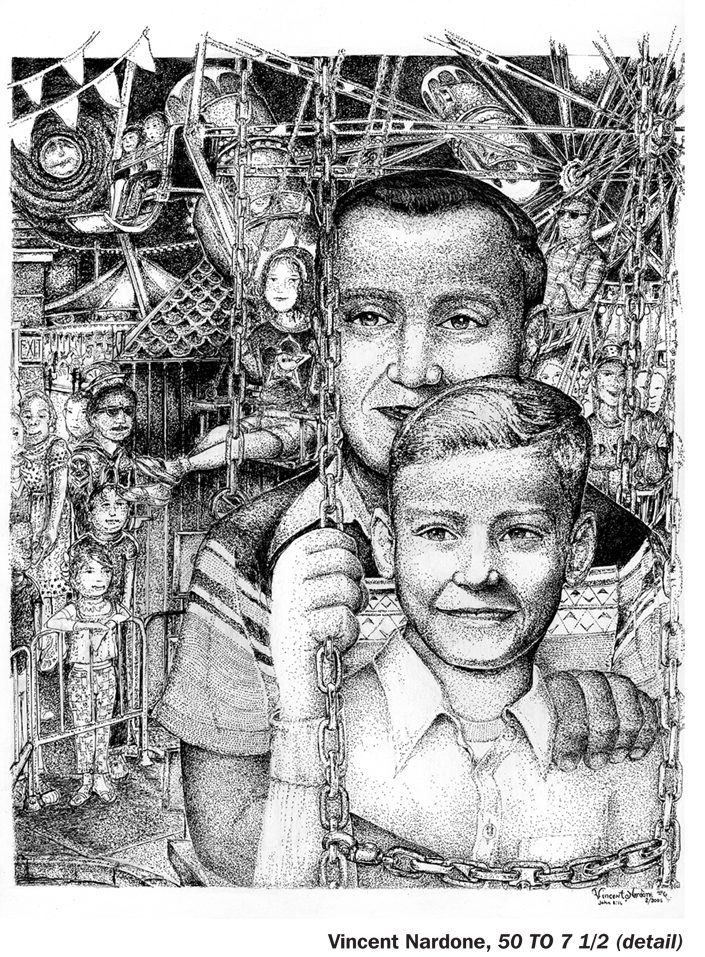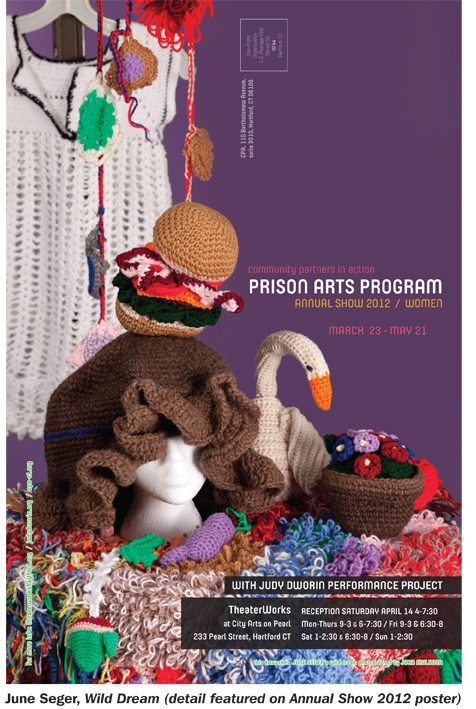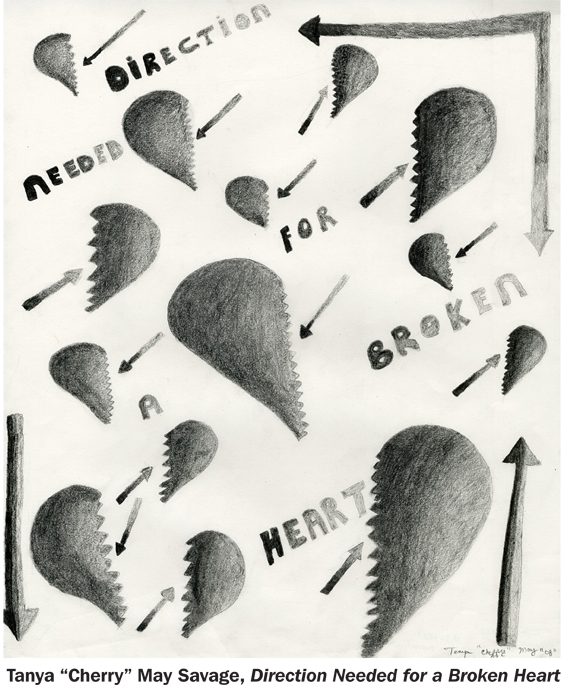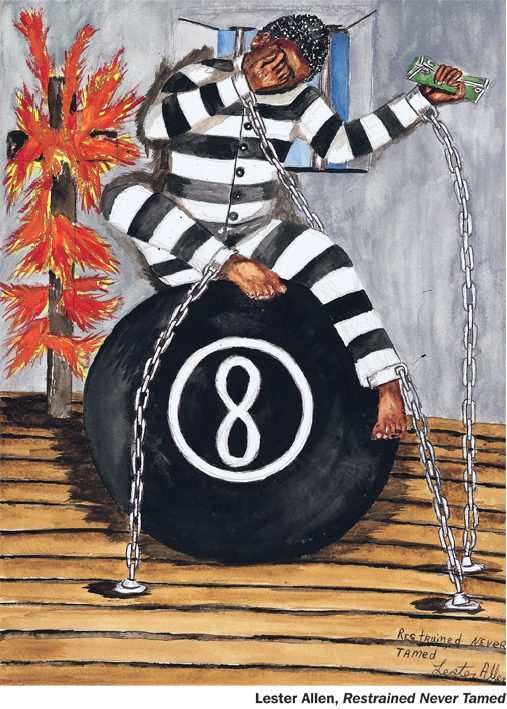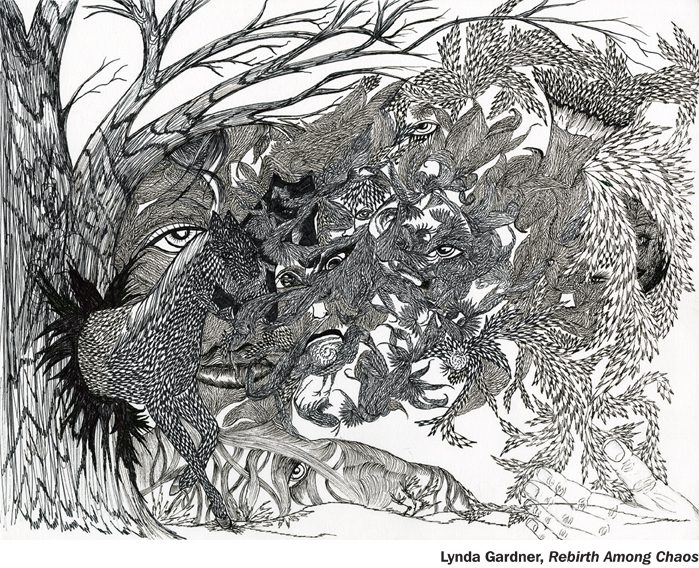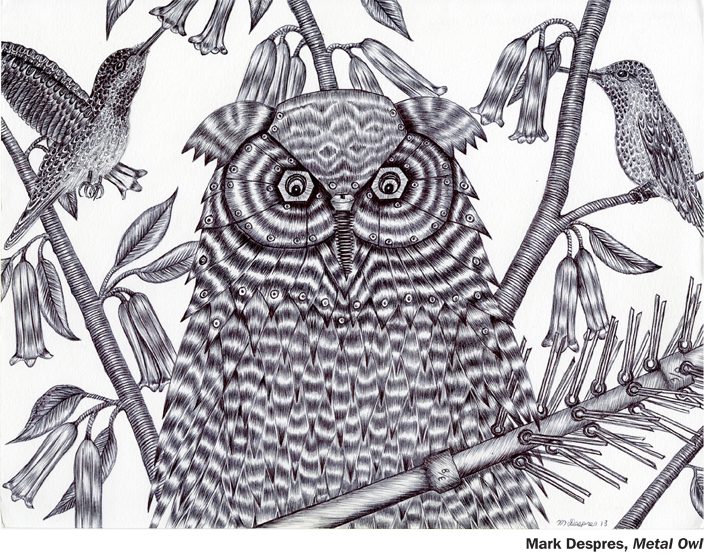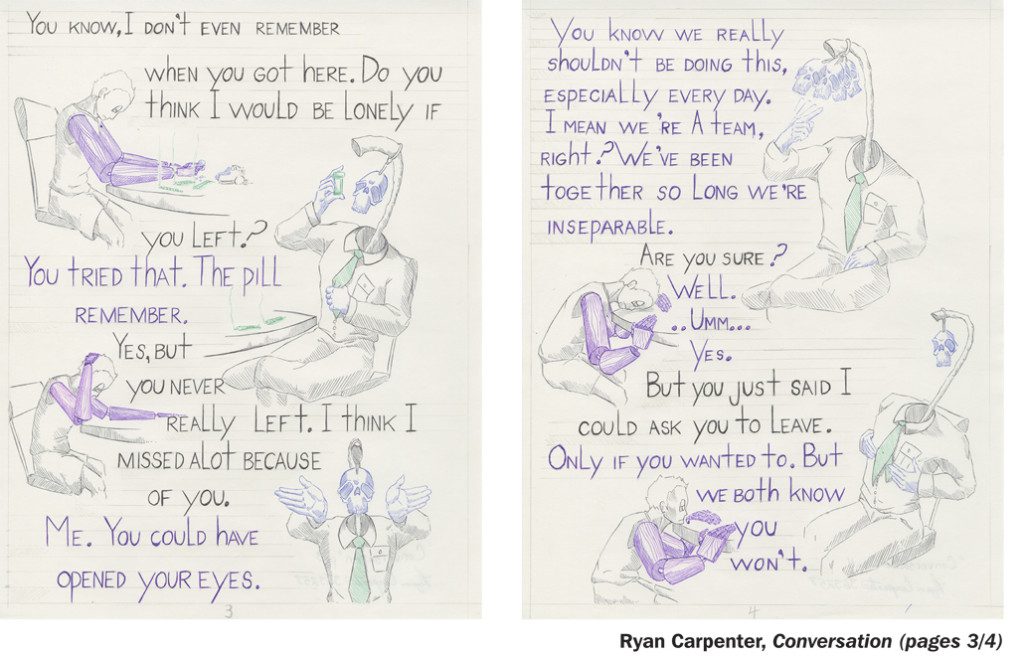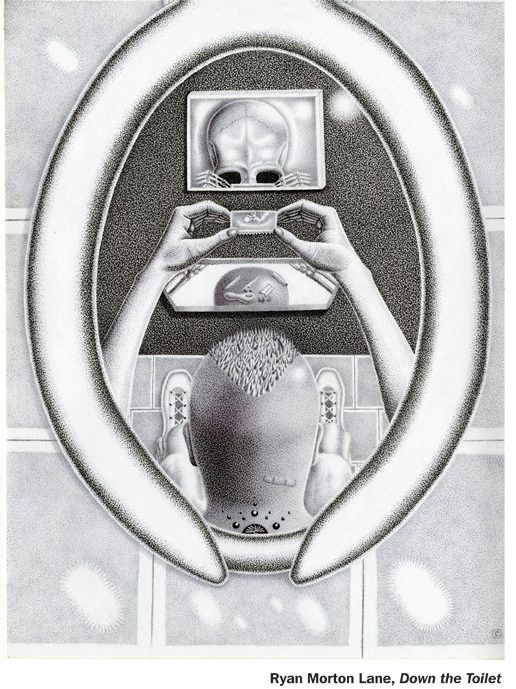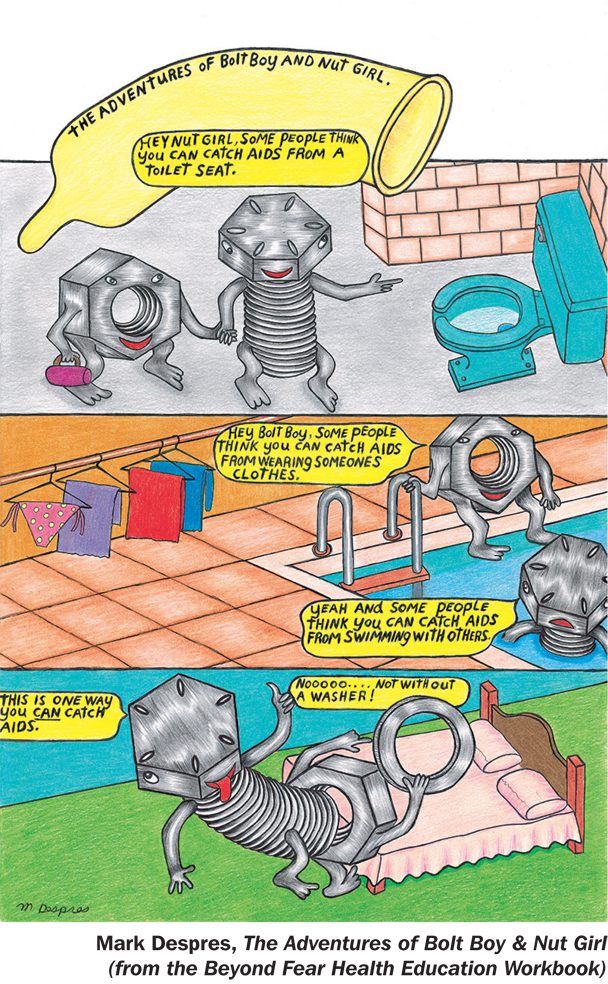The New York Comics & Picture-Story Symposium is a weekly forum for discussing the tradition and future of text/image work. Open to the public, it meets Tuesday nights from 7-9 p.m. EST in New York City. Presentations vary weekly and include everything from historical topics and technical demonstrations to creators presenting their work. Check out upcoming meetings here.
Artist, educator, musician, and curator Jeffrey Greene has worked with the Prison Arts Program of Community Partners in Action for the past 23 years and has worked with over 2000 inmates. He has organized over 250 exhibitions and publications and currently stores the program’s archive. Today, he works with Phyllis Kornfeld and Sister Jerilyn Hounihan on developing art in the inmate community. Established in 1978, the program goes into five different prisons and provides art classes, projects, and exhibition and publication opportunities. It’s part of the larger initiative Community Partners in Action, which is itself a much older organization founded in 1875, first as the Friends of Prisoners Society and later as the Connecticut Prison Association. After starting in 1991, Greene dedicated himself to the managing the program and expanding its initial focus past occupational training to the way art changes how people think about the world and themselves. Technical skills are important, but putting in the time and effort to make 100 drawings will not only improve those, but teach people something vital about themselves by the time they’re done. One of the main lessons he teaches is that making art lets you make something that wouldn’t exist if it wasn’t for you. “Something that has never been seen before is now seen.”
Greene remembered being struck by how much art is part of daily life in prisons. “Everyone is either making art or hiring someone else to make it,” he said, for gifts or personal use. When he was new to the program, Greene reconsidered his preconceived ideas about art. He’d been wondering what he should make art about and here was a community of people all making art because they couldn’t help but make art; it was part of their everyday life. The Prison Arts Program challenges inmates to go beyond the typical prison art of tattoos, copied landscapes, and portraits, and to make work that speaks to them on a deeper level. As the program explains, “the results are often extraordinary.” Greene saw his role as an “alien” coming into the prison community as significant. He pointed out that many of the prisoners enter the system as young men and many correctional officers start working in prisons around the same age; the two groups grow up into their adversarial roles.
He discussed the importance of letting inmates come together once every two weeks with other like-minded individuals. Participants meet every other week and show each other what they’ve been working on in their cells. They will spread drawings out over tables and start discussing them with the other participants.
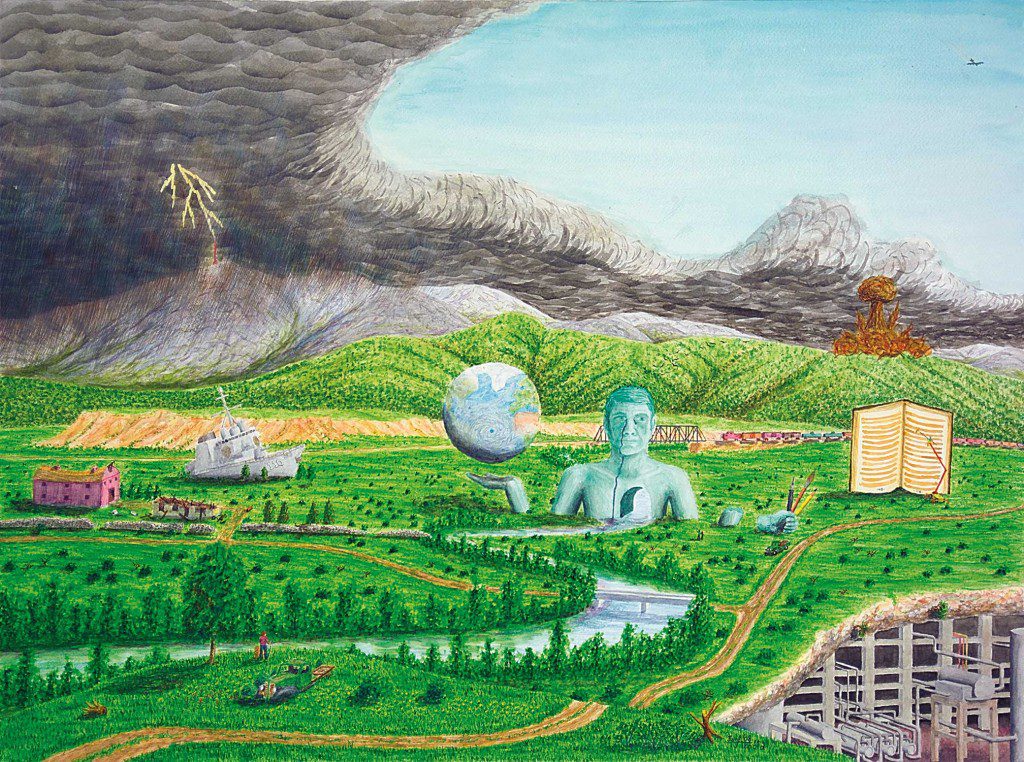
Greene then moved to the main part of his talk, which was showing 244 slides of art from the program and accompanying them with stories about the artists. The program encourages its participants to challenge themselves. To make 100 drawings. To make a list of 100 things you love in the world (then pick three of them and combine them in one drawing). To draw someone in a space looking into another space, then to make a drawing from the opposite perspective. To draw everyone they’ve ever loved or everyone on their phone list. To draw their earliest memory. Every year, the Prison Arts Program puts on a gallery show for the public. Many correctional officers and their families attend, as do the families of the inmates themselves.
Frederick Gunn is a practicing Muslim who wanted to illustrate the Quran. Since Islam prohibits drawing humans or animals, he used figurative art to show specific scenes.
Michael Iovieno started drawing on 3×5 inch index cards partly because one of his hobbies is to collect autographed index cards.
Inmates use the materials and media available to them. Ballpoint pen is a widely used medium because the pens are readily available. Some drawings are so intensely filled with ballpoint that the paper bubbles up from the weight of the ink. The size of the work is limited to the size of the available paper (although some participants combine several sheets to make large pieces). Greene loves it when unusual colors become available through colored pencil donations. The colors have an immediate impact on the work.
Illustrated envelopes are the most common form of folk art in prison.
Many participants in the program spend weeks or months making their art. Vincent Nardone sometimes spends about seven or eight months on each drawing (working on several at the same time). Lee Jupina made over 70 ballpoint drawings in three months. The logistics of making art in prison is a major consideration for the program participants. They discuss how to draw by the light of the T.V., how to plan their time so that they can work when their cellmates are somewhere else, how to store art properly so it’s not confiscated as contraband or damaged. Jolly Ranchers are an improvised source of watercolor if they’re soaked. June Seger makes blown-glass sculptures from the candy. Most of the work Greene showed consisted of paintings or drawings to stay in keeping with the Symposium’s interest in narrative art, but he mentioned that sculptures are also a big part of inmate art.
One of the challenges that participants take on is to draw their memories. Timothy Lassogna (above) committed to making one painting for every year he’s been alive. The one above reflects the moment his mother abandoned him on a street corner. Vincent Nardone (below), started by drawing his earliest memory: when he was a child visiting New York City for the first time, he was sure he’d meet King Kong (hence the plane). Since he started the program in 1999, he’s gone on to make countless drawings, some of which have appeared in the American Visionary Art Museum in Baltimore. One of the themes he explores is the world of the past (which he left when he went to prison in 1976). In some ways, Greene pointed out, the art becomes a time machine.
As part of this program, Greene does not teach classes at the women’s institutions, but he does curate art from them for the annual shows. Women inmates are allowed to crochet (male inmates are not). June Seger spent a year crocheting a dream world (part of which you can see in the poster above). The blanket in the photo was made from fabric scraps she collected from every woman in the prison. Technical development goes hand in hand with exploring ideas. Instead of just using generic shapes to learn how to shade, Tanya “Cherry” May Savage made the piece below.
Part of the program’s goal is to normalize and dignify the making of art in prisons. To that end, Greene prints and distributes posters for the annual shows throughout the different facilities, along with printed annuals filled with artwork and writing. Any inmate, visitor, or officer in these locations sees this artwork throughout the different spaces.
The program involves participants in published projects like a workbook developed in collaboration with Beyond Fear, an inmate community program educating people about HIV/AIDS. Members of the Prison Arts Program produced drawings and comics about HIV/AIDS awareness.
The Prison Arts Program also works with the Department of Health and the Department of Education to produce work about STI awareness. Participating artists include juveniles who have been sentenced as adults who create work educating high schoolers and other kids about STIs.
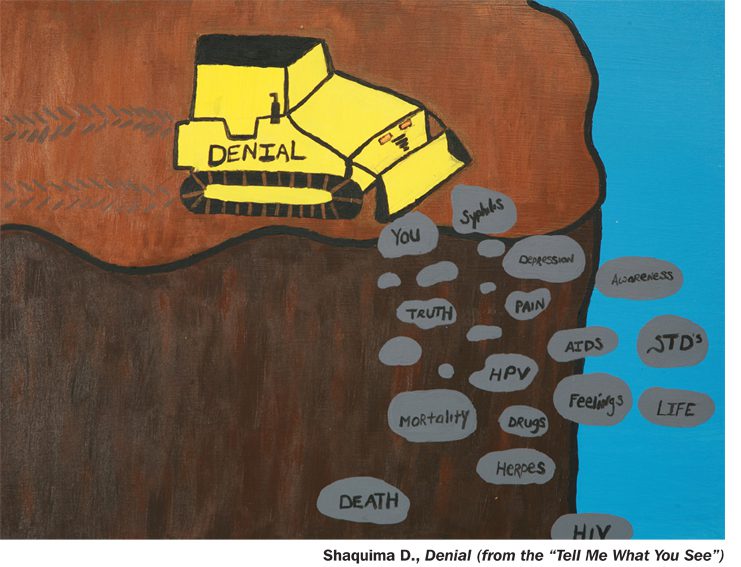
Another part of the program involves a series of lectures on the history of prisons. Participants read history and philosophy about prison and present on different topics. They also create art about the future of prison. Dennis Coleman wrote a satirical legal act called “Act Concerning Prison Dissolution” which imagines a future where prisons cannot handle the number of prisoners and so civilians are asked to “adopt an inmate” into their homes.
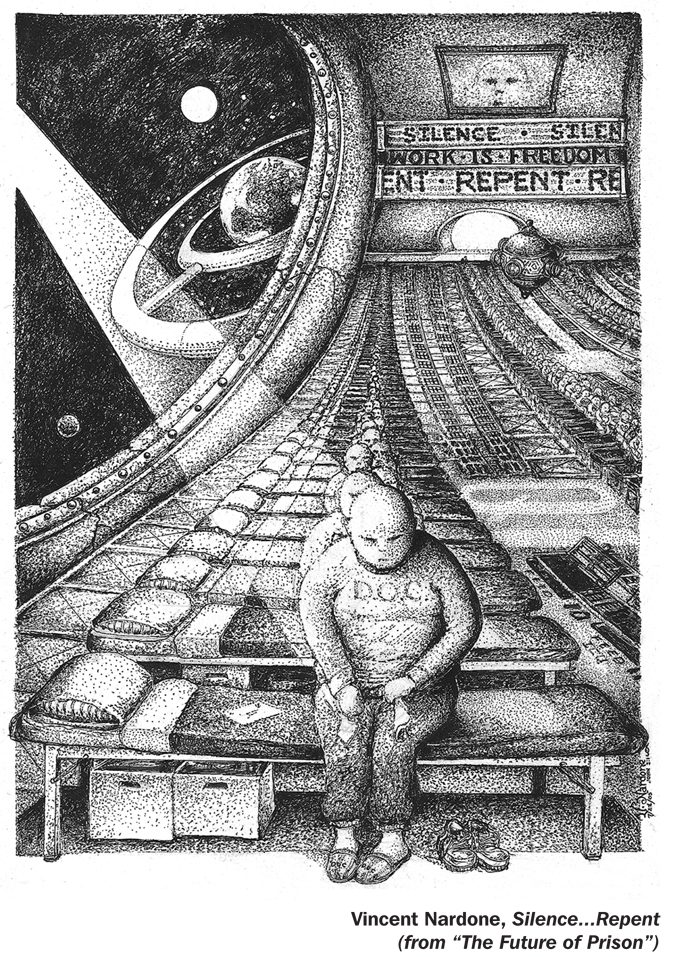
The Prison Arts Program’s annual show is coming up on Thursday, May 22nd, 2014 at the Silpe Gallery, Hartford Art School, University of Hartford, West Hartford, CT. The show runs until June 10. More than 800 artworks will be on display. Hours and info will soon be available at cap-ct.org.
***
Symposium members asked for more details about the program’s structure. Class is held every other week, and the inmates do most of their drawing in their cells. How much time they have to work on their drawings depends on several factors, including whether they have prison jobs. Those with jobs do a lot of their drawing in the morning and at night, or during time off from their jobs on shakedown or on holidays. Everything has to be by the book, so the art materials are meticulously documented. Every class, Greene brings his own sharpeners so participants can sharpen all their pencils. Greene has worked with the different facilities to ensure participants have a safe space allowed for their work. “Guys work for seven months on a drawing…if it gets damaged,” Greene described, they cannot file grievances for the lost artwork since it officially counts as contraband. There is a waiting list for the class and inmates come off that list chronologically.
Someone asked about prisoners who were on medication and how making art impacted their lives. Greene pointed out the paradox that being on meds makes it harder for inmates to concentrate on their work. That difficulty might motivate them to be able to come off their meds, but if they do so, they’re not complying with their program which then hurts their chances for parole.
Judges are part of the program’s viewership. Some of the artwork is part of a rotating permanent collection at a Connecticut courthouse.
The Prison Arts Program is a part-time occupation for Greene. He currently commutes to Connecticut and, in his own words:
I’ve been organizing workshops at the Times Square Hotel (a 650 apartment SRO at 43rd/8th Avenue), the Prince George (a similar SRO on 28th Street—finished a 10 year project there last year) and prior to that rented a classroom at a community center named “El Bohio” in an old public school east of Tompkins Square Park on the Lower East Side (before it was sold by Giuliani) and organized workshops and gave studio space to artists on mental disability (holding regular exhibitions at the now defunct Margaret Bodell Gallery and at Cooper Union).
A member asked Greene what he thought of the official investment in this program. Ideally, Greene answered, this is a program that would expand. If it was a larger project, it would have to serve new purposes. It could be implemented on a wider scale, there could be projects for inmates to make art with their children, etc. The cost/benefit of this is huge, but unfortunately, that’s not a foreseeable reality right now. It’s built on one or two individuals working to maintain and sustain a program, and when they burn out, the program ends. College students’ abilities to impact and manage these programs are limited by the nature of their time commitment. And it’s a shame, Greene explains, since these programs do more than just teach inmates how to draw. “Rigorous endeavor towards an end” can change how someone thinks about themselves and their relationship to the rest of the world.
***
All images courtesy of the artists and the CPA Prison Arts Program.
***
Andrea Tsurumi is a NY-based illustrator and cartoonist who likes history, absurdity, and outer space, in no particular order. She was included in the 2013 Best American Comics notables list. You can see her work here and her latest projects here.

